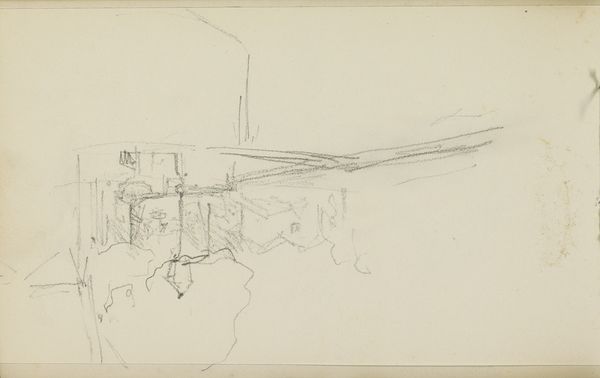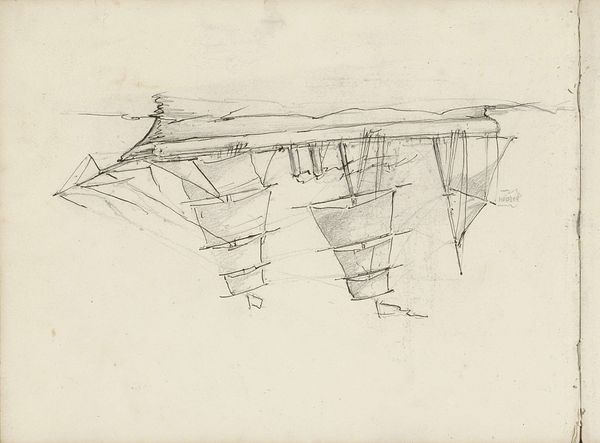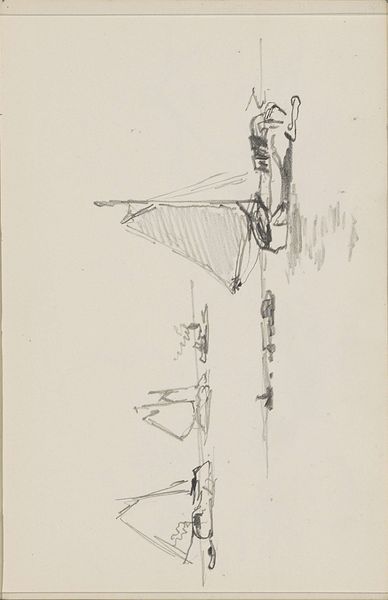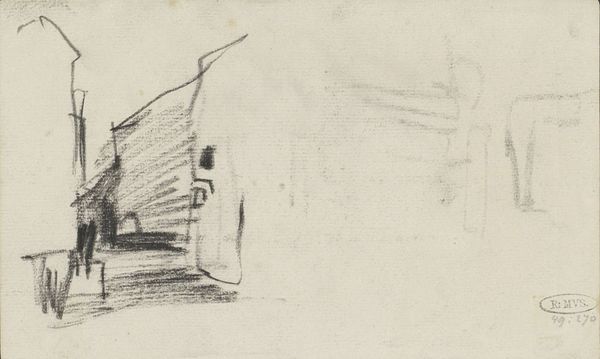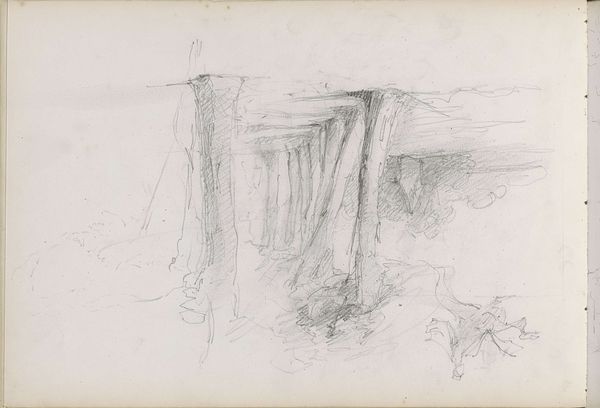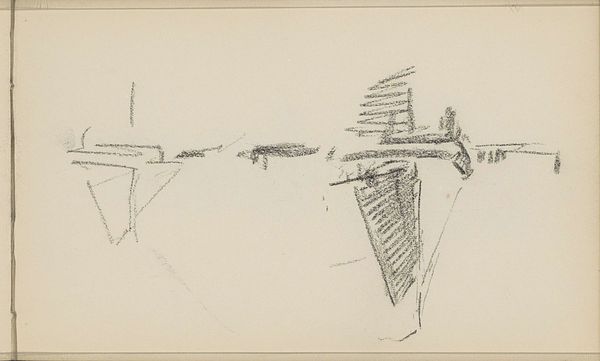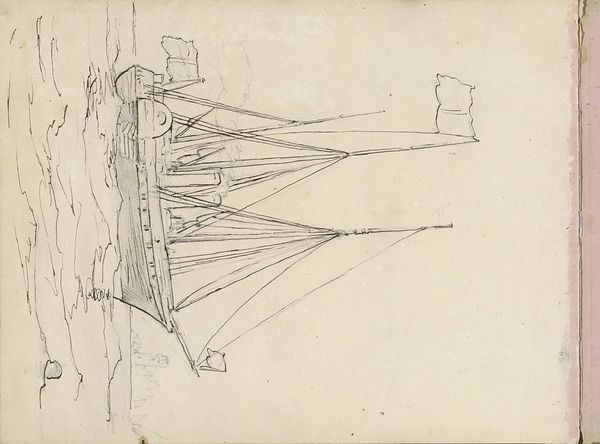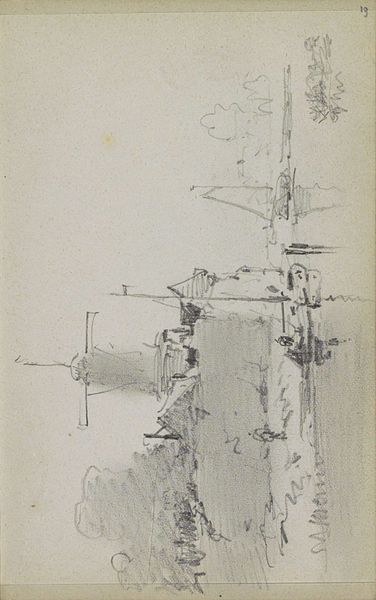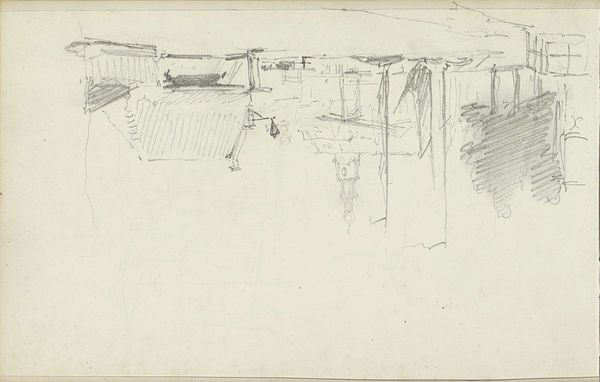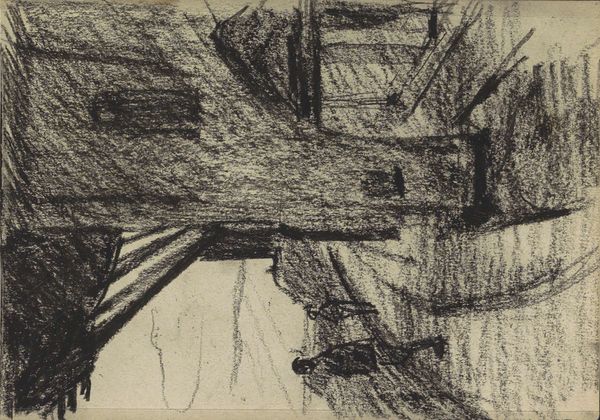
drawing, paper, pencil
#
drawing
#
pencil sketch
#
landscape
#
paper
#
pen-ink sketch
#
pencil
#
realism
Copyright: Rijks Museum: Open Domain
Curator: Looking at this drawing, I'm immediately struck by its stillness, its quietude. It feels almost like a moment suspended in time. Editor: Indeed. What we have here is "Men in a Boat with Furled Sail" by Petrus Johannes Schotel, dating from around 1825 to 1875. Schotel captured this scene using pencil, pen, and ink on paper, and it currently resides here at the Rijksmuseum. What do you suppose it communicates to today's audiences? Curator: I think, to comprehend Schotel’s choice of subject, we must appreciate the importance of maritime culture within Dutch society. During Schotel’s life, the country grappled with shifts in trade and naval dominance, so depictions of serene boat scenes carry not only aesthetic but national significance. It portrays men engaged in this quintessential labor—their lives intrinsically tied to both nation and nature. Editor: An excellent point. From a formal standpoint, the contrast between the crisp lines of the boat and sail, set against the lightly sketched water and distant shore, provides visual interest. It almost functions as a semiotic dance, where the "furled" sail comes to represent labor or action subdued; think of it in terms of potential or readiness. How else might we examine this piece structurally? Curator: Structurally, its perspective, its very point of view speaks volumes. We gaze upon these working men, suggesting a power dynamic of observer and observed, which, I think, prompts further consideration. How can we—as museum visitors or academics—ensure our reflections on the maritime labor represented don’t further marginalize or diminish their legacy? The composition isn’t neutral; it necessitates ethical evaluation. Editor: I follow your perspective. The visual elements, particularly line and form, achieve a subtle, muted quality that mirrors the quiet labor you highlighted earlier. Schotel presents form with incredible, precise simplicity. It feels unadorned, and very honest. Curator: The men in the boat exist for themselves but simultaneously symbolize an entire class of people—their hardships and stories often omitted or misrepresented. I see a powerful story conveyed so gently. Editor: Ultimately, Schotel prompts us to consider the visual poetry found within the everyday, encouraging engagement beyond surface appearances. Curator: Absolutely. Through Schotel, art offers us lenses, as well as mirrors, to reveal deeper sociopolitical meanings embedded in both art history and our present reality.
Comments
No comments
Be the first to comment and join the conversation on the ultimate creative platform.
